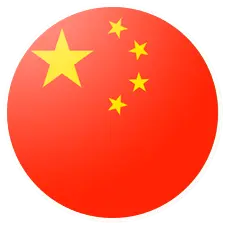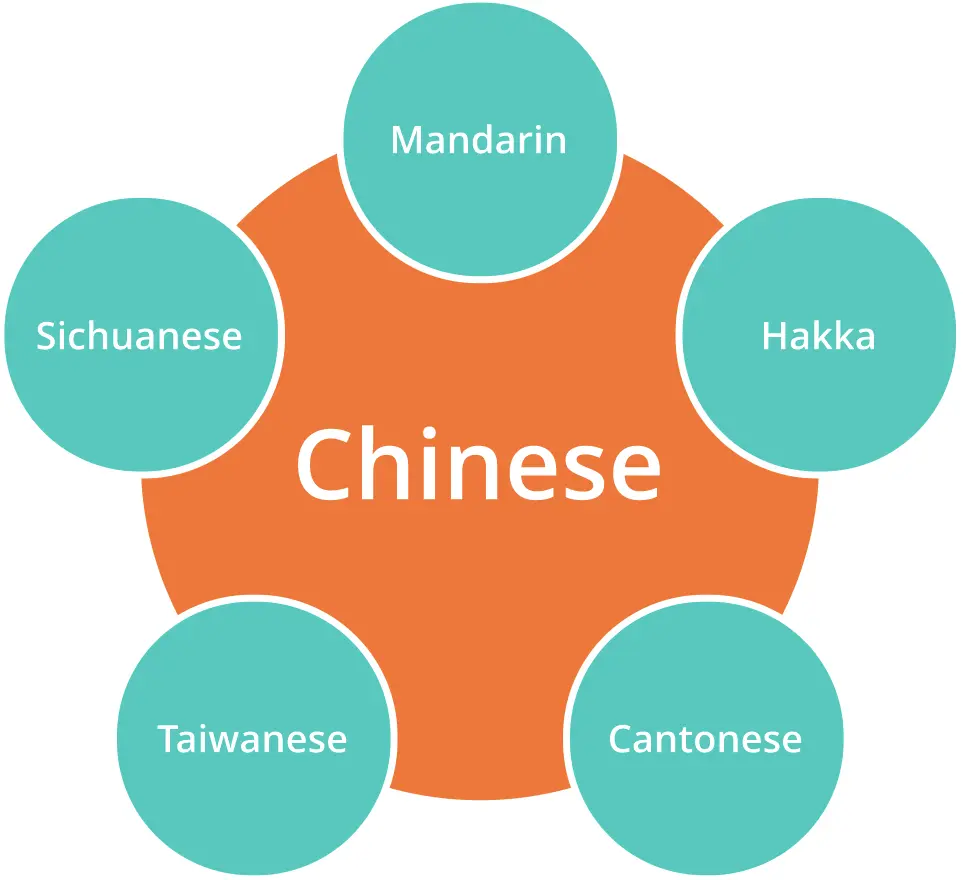"All is well and I am enjoying the Mandarin lessons. Zhiduan is a great teacher and I have been making some good progress."
Mandarin Chinese course in Paterson.
Language lessons across the USA and Canada
Call us! 1-877-566-9299 / 1-416-800-9242

If you are thinking about learning a second language, you have probably heard that the best choice is learning Mandarin Chinese. But why, when the language is so different and seemingly hard to learn for English speakers?
Well, being fluent in Chinese has several benefits. In addition to expanding your social circle to billions of people who speak Mandarin all over the world, you’ll enjoy your trips to China to the fullest. Only 1% of the Chinese population is fluent in English, so if you plan to visit the country, it would be wise for you to learn the local language. In this way, you’ll be able to visit the Great Wall of China and order food or ask for directions without any problems!
Knowing Chinese will also broaden your professional horizons, especially if you are looking to expand your business to China or would like to apply for a job at a Chinese-speaking company. Regardless of your reasons for studying Chinese, we are here to help! Read on and discover everything you need to know to start learning this amazing language!
Chinese is the most-spoken language in the world, with over 1.3 billion native speakers (and almost 800 million speak Mandarin). It’s the official language of China and Taiwan, and it’s also widely spoken in other Asian countries like Singapore, Indonesia, and Malaysia.
Cantonese is widely spoken in Hong Kong, Macau, and Southern regions of China. Although these two Chinese languages are written in the same way, Cantonese favors traditional characters over the simplified system used by Mandarin. In Taiwan, most people speak Mandarin and 70% of the population is also bilingual in Taiwanese, also called Hokkien (not intelligible with Mandarin!).
Furthermore, there are 7 different varieties within mainland China. If you are interested in knowing more about them, you can read our article about these fascinating dialects of the Chinese language.

Additionally, there are thousands of Chinese-speaking communities spread around the planet. For example, almost 6 million people of Chinese origin live in the USA while 2 million call Europe their home. There are Chinatowns in almost every major city in the world! From Buenos Aires to San Francisco, Vancouver, or London, you’ll find Chinese neighborhoods almost everywhere you go.
This means that learning Chinese today is a major asset. Being proficient in this Asian language will not only be useful to travel around the world or to get by in mainland China, but you’ll soon discover professional benefits as well. If you have a business and would like to expand to China, knowing Mandarin is essential to communicate with future partners and stakeholders, as most of them will probably not be fluent in English.
First things first: Chinese doesn’t have an alphabet but a writing system. Each Chinese character (or pictogram) does not represent a letter but a syllable or even a word! That is why they are not put together as letters would.
The Chinese writing system has existed for more than 2,000 years and has evolved ever since. In the 1950s, Mandarin Chinese characters were simplified due to the high illiteracy rates in China, and this simplified system has become the most popularly used in China today (and in other parts of the world, too). There are more than 50,000 Chinese characters, though you only need to know between 2,000 and 3,000 of these symbols to understand a newspaper article, for example.
Today, verbs and adjectives are typically represented by one character, while nouns consist of 2, 3, or more. Some tips to write Chinese characters include:
The best way to learn Chinese writing is by exposing yourself to as much Chinese as possible! Luckily, you’ll find plenty of resources you can read to start getting familiar (or practice, if you already have an intermediate level of Mandarin) with the Chinese symbols! Here are 2 options to learn Chinese by reading real-life materials!
Stay current with what is going on today and read the news in Chinese. Don’t worry, your language level is not an impediment. If you are just a beginner, you can access sites like People’s Daily which also have an English version of the same page. In this way, you can start comparing how things are said in both languages. Another good idea is to read yesterday’s newspaper, so you’ll already be familiar with what you are reading and won’t find it so difficult.
Immerse Yourself in Poetry
Poems are also great to start reading in Chinese, as they are usually short and use simple sentence structure. The vocabulary depends on the theme of the poem, so you can get familiar with words about love, loss, sadness, longing, and more. If you are looking for some beautiful Chinese poems, you should access this site which features pieces by famous Chinese poets and some by amateur artists as well!
Chinese Pinyin is not an alphabet per se but it’s a way to represent the pronunciation of the Mandarin Chinese symbols. These pinyins are made up of initial and final sounds (no consonants or vowels here!) and are written using the Roman alphabet. Another crucial element is the use of 4 different tones that give words their meaning.
Let’s take a look at an example: 饭 (fàn), which means “rice”. A part of the symbol (饣) shows that the word has to do with food, while the other part of the character (反) indicates the pronunciation. Get familiar with the most basic radicals and you’ll recognize Chinese characters much more easily.
One of the main advantages of learning Chinese is its simple grammar system! The basic sentence structure, for example, is the same as in English and follows the pattern Subject-Verb-Object:

I drink tea.
This means you won’t have to overthink the order of the elements in Chinese sentences, as it will come naturally to you. Let’s explore some other aspects of Mandarin grammar below!
Luckily for Chinese learners, pronouns in Chinese are easy to acquire! Different from other languages, they don’t change their form depending on their function within the sentence. For example, in English, the performer of the action is “I” while the object is “me”. Have a look at the following table:
| 我 | wǒ | I | me |
| 你 | nǐ | you | you |
| 他 | tā | he | him |
| 她 | tā | she | her |
| 它 | tā | it | it |
Another advantageous feature of the Mandarin language is that there are no genders. Just as in English, nouns are not masculine or feminine (or neuter!). You simply learn the word in one form, as in:

(the) sun.

(the) moon.
Plus, Mandarin nouns and adjectives don’t have plural forms! This will also save you from the hassle of remembering irregular plurals.
You may also be pleased to know there are no articles in Mandarin Chinese, which will further simplify your language journey!
There are no verb conjugations in Chinese. These words don’t change their form in any way, never. Isn’t it great? Learn the word that corresponds to the action “eat” and you’ll know how to say it in any context, for any subject. Here are some examples:
I have time.
He has a girlfriend.
The only thing you’ll need to learn are particles that go before or after the verb which indicate whether the action took place in the past, present, or future. One of the easiest ways to do this is by using time markers like “later” or “yesterday”, as in:
I am at home today.
Literal translation: “Today I be at home.”
After navigating the simple Chinese grammar system comes the most difficult part… pronunciation. Mandarin is a tonal language, which means that the meaning of words and phrases is often signaled by tones. Luckily, Pinyin (a way of representing the pronunciation of the Chinese symbols) is incredibly helpful to understand how words are pronounced and with which tone.
You just need to be careful with the pronunciation of pinyin, as spelling and sounds are not the same as in English. For example, if you see the word “he” in pinyin, you should pronounce it like “ha”.
As we stated above, Pinyin also signals which tone you need to use when speaking in Chinese. There are four main tones (neutral, rise, fall, and fall-rise) and they determine the meaning of words. For instance, the word “ma” has 4 (or 5) different meanings depending on the tone used, as seen below:
The first mark above the “a” signals a level tone, while the second accent shows a rising tone. Instead, the “ma” in red should be said with a fall-rise and the last “ma”, with a falling tone.
As you can see, mastering the Chinese tones is as essential as learning the symbols. Otherwise, people may end up not understanding a thing you say. To avoid misunderstandings, here are some tips on how to master the Chinese pronunciation in a short time!
In addition to knowing the rules and learning how tones are signaled in writing, you’ll need to expose yourself to spoken discourse and start trying to copy native speakers. We understand it can be hard to find Chinese speakers with whom to practice, but today there are dozens of options to put your listening skills into play. For instance, you can listen to podcasts and songs, watch series or movies, or subscribe to YouTube channels suitable for your Chinese level.
Another option is to sign up for individual or open-group lessons with a professional, native-speaking tutor who will conduct the whole lesson in Chinese. Little by little, you’ll get used to the pronunciation and rhythm of the language in a safe environment adapted to your needs and level!
Practicing the spelling and pronunciation of individual characters is great, but at some point, you’ll need to start practicing phrases, and then whole conversations. There’s no better way to do this than with a trained teacher who will know how to point out your strong and weak points when conversing. However, if you prefer not to take Chinese lessons, you can still practice on your own!
Listen to conversations in Chinese and try to mimic them. Don’t forget to record yourself and then compare it to the original conversation to see if you are using the same tones, rhythm, and individual sounds. Repeat the process as many times as needed! And if you can find friends who speak Chinese as their first or second language with whom to practice, much better.
Pay attention to your own speed of delivery. If you can speak fast already, that’s great! But if you are just a beginner, do not sacrifice accuracy for the sake of speed. Nobody will mind that you speak a bit slowly if you can get your message across. Slow down and make sure you don’t mispronounce the character 樂 and “music” turns into “pleasure”!
Acquiring the Chinese tone system can be nightmarish if you only focus on rules and practice words in isolation. Luckily, there’s a more interactive (and fun!) way to learn: with online games! If you are a beginner-level student, you can use sites like Pandatree and play games like Listen & Match or Choose the Correct Flashcard to learn the pronunciation of individual words. If you are an intermediate-level learner, instead, pages like Games Learn Chinese will be more useful to you, as they focus on phrases rather than words in isolation.
Learn to Speak Chinese with a native teacherNow that you have decided to take the leap and start learning Chinese, you’ll be glad to know there are plenty of tools and resources to help you become fluent. No matter how much time you have to devote to studying Mandarin, as long as you are consistent, your effort will pay off. Learn Chinese with these top online resources:
Learning Chinese is an invaluable asset in today’s world, and what better way to acquire this complicated language than when being a child? Kids absorb knowledge like sponges and find it much easier to learn new abilities than adults. If you’d like to encourage them to learn this useful language, take a look at these top 3 Chinese resources for kids and get started!
Certainly, learning Chinese is a long-term investment that requires patience and motivation, but the effort will soon pay off! And the road ahead will be much easier with the help of an experienced teacher to guide you every step of the way. Contact us today and we will pair you up with the best Chinese tutor for your needs and preferences! Meanwhile, you can follow us on Facebook and Instagram and read our blog, where we regularly publish interesting articles and resources for language learners.
Start learning Chinese today!From our clients all over the world
Have a look at successful and satisfied clients.
My teacher was excellent - the course was one-to-one so it was perfectly tailored to what I was looking for
Our tutors can come to your home or teach you online!
Send us a quick inquiry